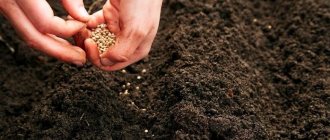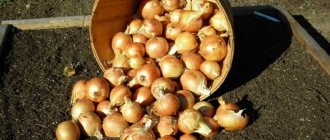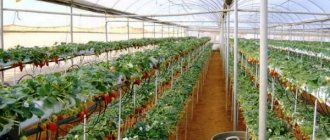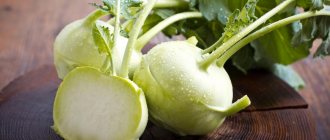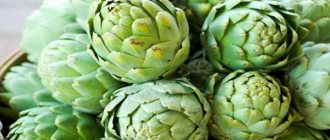Thanks to the intensive development of poultry and pig farming, corn is grown in large volumes in our country. At the same time, in addition to fodder, there are a large number of cereal varieties that are cultivated for use as human food. They are distinguished by more delicate grains and taste.
Such varieties are grown both in personal plots and in dachas. Today, only one type of cereal is cultivated - sweet corn. A large number of varieties and hybrids of this species have been developed, suitable for both large-scale cultivation and small private farms.
Farmers and gardeners who decide to plant a crop on their farm would do well to study how corn grows and what difficulties can be encountered when growing it.
Description of the plant
Corn
Herbaceous annuals - corn or maize - belong to grain crops, but are considered a cereal. The plant’s homeland is the region of modern Mexico and Peru; it came to Russia only in the 18th century during the Russian-Turkish War. Initially, the crop was grown in the southern regions of the Russian Empire.
Unlike other cereals, corn has developed multi-tiered root and above-ground parts. Depending on the variety, individual plants can reach 7 meters. Long leaves protect the inflorescence – the spadix and panicle. A monoecious plant has male flowers (can be identified by the presence of stamens) and female flowers (there are only pistils).
The plant has been so cultivated that corn no longer grows in the wild.
Despite the fact that corn is considered a southern, heat-loving crop, it is also grown in northern latitudes (by seedlings), because seed ripening begins at +10 degrees. At the same time, the seedlings can even easily tolerate short frosts.
Maize is a valuable food crop
The growing season of maize takes from 3 to 5 months. During this time, the plant forms 1–2 ears, the average weight of which reaches 500 g, length – 40–45 cm.
Breeding methods
Corn is bred mainly by sowing seeds in open ground. This method is suitable for most regions with the exception of Siberia and the Urals. Due to the short summer, plants do not have time to develop normally, and the high probability of return frosts can lead to the death of seedlings. Therefore, in such areas, the seedling method is used, but its effectiveness is extremely low, since corn does not take root well after transplantation. To get a good harvest, you need to grow and transplant 30% more seedlings than required for a particular site, creating a reserve in case of death.
Related article:
Growing corn in the country - revealing the secrets of a high yield
Seed preparation
For any planting method, seeds must undergo pre-sowing treatment, which is carried out as follows:
- seeds are calibrated (sorted), the largest specimens without defects or damage are selected;
- the selected material is checked for germination by immersing it in a salt solution for several minutes and removing the floating grains - they are unsuitable for sowing;
- the seeds that have settled to the bottom are washed with clean water and then disinfected by treatment in a dry disinfectant TMTD (5–7 g per 1 kg) or in a solution of potassium permanganate (5 g per 1 liter of water);
- 5 days before sowing, the seeds are soaked in warm water, changing it daily, until they swell;
- then laid between two layers of moistened fabric for germination (the fabric should always remain moderately damp).
Related article:
5 varieties of delicious corn that will delight you with a good harvest
Hatched seeds are sown in open ground or in seedling containers.
Sowing seeds
Corn is sown mainly in a square-cluster pattern. The work is performed in the following sequence:
- mark places for future holes with an interval of 50 cm and row spacing of 1 m;
- dig holes, pour 1 liter of water into each and let it soak;
- 3 seeds are dropped into moist soil, buried 5–6 cm;
- sprinkle with damp soil, add a dry layer on top;
- water again;
- construct a film covering;
- After approximately 10 days, sprouts will appear, then the cover is removed;
- when the seedlings grow a little, they are thinned out, leaving one of the strongest in each hole.
To ensure proper pollination, you need to sow at least two, and preferably four, rows, then the cobs will not be half empty.
Related article:
5 varieties of delicious corn that will delight you with a good harvest
Seedling method
Corn seedlings are planted in separate containers, preferably in peat cups. They are filled with a mixture of compost, sand, peat and ash in a ratio of 2:1:1:1. The landing algorithm should be as follows:
- 1 seed is planted in each cup, buried 3 cm;
- water with a warm solution of Fundazol (2 g per 5 liters of water) to disinfect the soil;
- placed on a windowsill or other well-lit place;
- water 1-2 times a day, not allowing the soil to dry out;
- Superphosphate fertilizer is applied 1–1.5 weeks before transplantation.
Planted according to the same scheme as described for sowing seeds in open ground. The holes need to be dug a little deeper than the height of the cup. After planting, sprinkle with earth, lightly compact, moderately water and mulch with sand.
Site selection
Corn grains
The culture is also unpretentious to lighting - for stable growth, 12–14 hours of daylight is enough for it. You should only be meticulous in choosing the soil: it should be quite fertile and loose.
It is considered optimal for cereals: loamy or sandy loam soil with weak or neutral acidity (from 5.5 to 7 pH). Good drainage is important so that water does not stagnate when watering, and groundwater does not come close to the soil surface.
If the soil on the site is unsuitable, then it can be enriched by applying fertilizers. The basic principles of increasing soil fertility, depending on the period of preparation for planting cereals, are collected in the table.
| Time spending | The essence of the technique |
| In the fall before next season | Dig up and add humus or compost at the rate of 1 full bucket per 1 m2 |
| 1 month before landing | Add 0.5 kg of dolomite flour or 3 times more wood ash to the soil |
| In 10–14 days | The soil should be weeded and a complex mineral mixture should be added. |
| During boarding During boarding | Add 0.5 kg of humus to each hole |
The plant needs protection from cold winds, so it is better to plant it under the protection of large trees or near buildings.
Growing conditions
Before planting corn in your dacha or garden plot, you need to select a suitable site for it and determine the optimal growing conditions. At the same time, the timing and methods of planting depend on the climatic characteristics of a particular area.
Sowing dates in regions
The crop is grown almost throughout Russia. But each region has its own characteristics:
| Region | How to grow corn in the garden |
| Center and north-west of the European part, Central Russia | Planting seeds in open ground is suitable. Sowing is done in mid-May, when the soil warms up and dries out, and the likelihood of return frosts is excluded. You can also choose cold-resistant varieties that can be sown earlier - in the first ten days of May, but under film. |
| Southern and North Caucasus Federal District | The most favorable regions. You can sow in open soil from the beginning of April. |
| Siberian and Ural Federal District | Difficult climatic conditions do not allow sowing seeds in open ground. The seedling method is used with seedlings being planted in the beds in the third decade of June. |
Important to read: Gardener's lunar calendar
Site selection
A bed for corn planting is selected taking into account the following requirements:
- good lighting throughout the day;
- absence of drafts and shading;
- suitable neighborhood - cucumbers, tomatoes, pumpkin, legumes (corn stalks are a ready support for climbing crops);
- inappropriate proximity - celery, beets.
Related article:
5 varieties of delicious corn that will delight you with a good harvest
In addition to the described requirements, it is important to follow the rules of crop rotation. Under appropriate growing conditions, the maximum yield is obtained from the beds on which the following were previously grown:
- cereals
- legumes
- melons
- potato.
Advice to the gardener: Favorable proximity of vegetables in the country
In one place, corn in a garden can be grown for several years in a row. Unsuitable predecessors are sorghum and millet, as they are affected by the same pests and diseases. In arid areas, crops cannot be planted after sunflowers and beets, since these plants dry out the soil greatly.
Soil preparation
This crop cannot be called too demanding on the composition of the soil, but with the right composition and the necessary nutritional value, higher yields can be harvested. To do this, the following factors must be taken into account:
- the soil should be loose with good permeability to air and moisture;
- In terms of composition, chernozems, loams, and sandstones are best suited, but they must be slightly acidic and well-fertilized, with deep groundwater;
- not suitable - saline, highly acidified, heavy clay soils;
- the bed should not be clogged with perennial rhizomatous weeds;
- sowing seeds or planting seedlings is carried out only in soil heated to 10°C;
- Soil moisture should not be excessive, since the plant tolerates short-term drought more easily than excess water.
Related article:
Growing corn in the country - revealing the secrets of a high yield
The bed for future plantings is prepared according to the following scheme:
- in the fall, dig with a shovel on a bayonet while simultaneously applying fertilizer - per 1 square meter. m 6 kg of manure, 100 g of potassium salt and 200 g of double superphosphate;
- in the spring, 10–15 days before sowing, loosening is carried out and 50 g of nitrophoska are added.
Too acidic soils are limed (200–300 g of lime are scattered per 1 sq. m).
Preparing corn before sowing
Sprouted seeds or dry seeds are planted in the ground, but this is preceded by a preliminary stage of preparing planting material.
Before germination, the seeds are first discarded, whole and large ones are selected. They are sorted into linen or canvas bags and left to warm up in the sun for 3–4 days.
Sprouted maize seeds
After this, experienced gardeners disinfect the planting material for half an hour in a solution of potassium permanganate or formaldehyde, then wash it and dry it on thick cloth or paper.
You can plant the seeds after this step, but it is more effective to increase germination and productivity by germinating the seeds. To do this, place gauze in several layers in a container, moisten it until wet, and then place seeds on the surface. It will take them an average of 7 days to germinate.
As soon as the first shoots appear, the seeds are planted in open ground, preferably early in the morning.
Growing corn from seeds
Sowing corn seeds
Corn is grown by seed method - seedlings and non-seedlings. Sowing corn for seedlings is carried out in cassettes with cells with a volume of 45 cm² or in peat-humus pots with a diameter of 12 cm. Fill the cassettes and pots with a mixture of well-structured turf soil, mixed in equal proportions with rotted humus. To increase the moisture capacity of the substrate, you can add a hydrogel to it, but when filling cells and pots with soil mixture, keep in mind that the gel can absorb up to 500 volumes of water. The hydrogel will allow you to reduce the number of waterings by 3-5 times, since the crystals that have absorbed water will gradually release moisture and release it into the soil.
Corn seeds are sown in early May, after germinating them for 5-7 days in a damp cloth or filter paper at room temperature. Place 3-4 corn grains in pots, two in cells. The seeds are buried 3-4 cm, after which the soil is moistened with a warm solution of 4 g of Fundazol in 10 liters of water and the crops are transferred to a sunny windowsill with eastern or south-eastern exposure.
- Brussels sprouts: growing in the garden, varieties
Growing corn seedlings
Corn seedlings develop very slowly, and it is advisable to provide additional lighting for them with a phytolamp or fluorescent lamp from the moment the seedlings emerge. During the growth period, seedlings are fed once or twice with Polyfide, Terraflex, Master or Kemira-hydro. When 3-4 leaves appear, leave one strong seedling in a cell, two in pots, and cut off weaker plants with scissors above the soil surface. The growth and development of seedlings accelerates from the moment they develop 4-5 leaves.
A week before planting seedlings in the ground, they begin to harden them with daily sessions of staying in the shade in the open air, gradually increasing the duration of the procedure until the seedlings get used to the new development conditions.
Picking corn
Corn is not picked because it does not tolerate transplantation very well.
Planting in open ground
Sowing maize is carried out in only two ways: seeds and seedlings. The first method is suitable for southern regions with hot, humid summers, and seedlings should be used by gardeners in temperate latitudes.
High germination can be achieved by planting germinated seeds in sun-warmed soil. Therefore, the optimal time for planting is the end of May, when the daytime temperature reaches +20 degrees.
Maize sprouts
Cultivation of seedlings is relevant for northern regions or for obtaining an early harvest (2-3 weeks earlier than when planting seeds). To obtain seedlings, germinated seeds are planted in peat cups or small containers, from where the seedlings can be easily removed later.
The best soil for seedlings is loose, slightly acidic, well-drained and fertile. Both ready-made soil substrates from the store and homemade soil from a mixture of leaf soil, peat and drainage in the form of sand are suitable.
It is not recommended to keep seedlings at home for growing: when planted in open ground, this can slow down the growing season.
Before immersing the germinated planting material, the soil is abundantly moistened. To be safe, place 2 seeds in each container at once. Seedlings are planted in open ground together with a lump of earth after 3–4 leaves appear. The planting depth is small - 5–6 cm, then the soil needs to be watered abundantly.
Soil preparation
Corn agricultural technology includes soil cultivation, application of organic and mineral fertilizers, selection and preparation of seed material, sowing, plant care and harvesting.
Choosing the right site before planting corn is important. The culture grows well on chernozem, loamy and sandy loam soil with good aeration and water permeability.
Corn is a light- and heat-loving plant, so a well-lit area protected from the wind is suitable for it. When choosing a site, it is important to take into account that it grows poorly in overly wet lowlands and wetlands. It is better to choose a flat or elevated area.
Corn absorbs a large amount of nutrients from the soil, so to maintain its fertility, it is important to observe crop rotation and not cultivate the crop in the same place for 2 years in a row.
Growing corn in open ground begins with selecting and preparing the soil.
Preparing the site before planting corn begins with harvesting the predecessors. Before wintering, the soil is fertilized by adding 20-30 kg of humus, 0.3 kg of superphosphate, 0.08-0.1 kg of potassium salts for every 10 m². Fertilizers are applied under plowing, the depth of which should be at least 25 cm, and preferably 30-35 cm.
In the spring, when the top layer of arable land begins to dry out, the area is loosened to the depth of seed placement (5-8 cm). You can use a harrow or rake. This technique will improve soil aeration, retain moisture in it, and accelerate seed germination.
Loosening is carried out diagonally to the direction of the arable land. If the area is abundantly overgrown with weeds, 2 cultivations will be required in the plowed land: the first is preliminary, to a depth of 8-10 cm, the second is pre-sowing, to the depth of seed placement.
When the soil warms up to +10 °C to a depth of 10-12 cm, a week before sowing, mineral preparations are added to the soil: 0.15-0.2 kg of nitrogen fertilizer per 10 m². Loosen it to a depth of 8-10 cm and level it.
Planting scheme
The volume of the harvest largely depends on the corn planting scheme, of which there are 4:
- in two rows
- in one row
- square-nested
- conveyor
The simplest and most reliable way is in two rows with a distance of 0.5 m for cross-pollination. In this case, the distance between plants should not exceed 35 cm. When choosing a method, it is worth considering that adult plants may suffer from a lack of air circulation with such dense planting.
When planting in one row, the holes can be located closer - up to 30 cm from each other. The depth of planting seeds in a row is only 10 cm, and to guarantee germination, 2 seeds are placed in each hole at once. Otherwise, the fit will look sloppy, with large gaps. The holes are filled with moist soil and covered with dry mulch on top.
Maize planting scheme using the square-cluster method
The square-cluster method of dense planting is excellent for the convenience of inter-row cultivation, timely loosening and thinning of crops. Corn seeds are planted in two or three parallel lines, with a distance between rows of 70 cm and between plants of 35 cm.
The conveyor planting method is used for continuous harvesting throughout the season. To do this, seeds of different ripening periods are planted in the ground, one variety at a time, every 15 days.
How to grow corn with seeds and seedlings?
Corn is grown in two ways:
- Planting seeds in open ground. It is used in regions where warm weather persists for at least 4 months, and frosts are excluded or at least unlikely. The main condition is heated soil. The soil is prepared in the fall or several weeks before planting by adding mineral fertilizers.
- By seedling method. In regions where there is a threat of return frosts and the summer is short, sowing in open ground is a risky and irrational business. We have to grow seedlings. But corn does not tolerate replanting well - a little damage to the roots is enough for the plant not to take root.
Selecting a suitable site
Requirements for a site for planting corn:
- Good lighting. No shadow.
- Protection from draft winds.
- Slightly acidic and well-fertilized soils.
- Good neighbors are cucumbers, tomatoes, pumpkins, beans, beans. Corn makes a good support for beans and cucumbers. Bad neighbors - celery, red beets.
Timing for planting seeds and seedlings
The timing of corn planting depends on:
- Planting method: seedlings or seeds.
- Climate and weather conditions.
- Economic necessity.
- Soil temperature.
Based on these conditions, approximate deadlines are determined:
- For planting seeds. The earliest is the end of April or the beginning of May. By this time, the soil has already warmed up to 10-12° C.
- For planting seedlings. Seeds for seedlings are sown in early May. Seedlings are planted no earlier than mid-June.
How to prepare the soil before planting?
All work is carried out before frost. Features of soil preparation for corn:
- In autumn, dig the soil 30 cm deep. Organic fertilizers are applied during digging.
- During digging, carefully select the roots of the weeds.
- Fertilizers for corn are applied twice:
- In autumn. For 1 sq. m – humus (5 kg), potassium salt (100 g), double superphosphate (200 g).
- In the spring. For 1 sq. m add 50 g of nitrophoska. 2 weeks before planting, the soil is loosened.
- Lime is added to soils with high acidity - 2-3 kg per 10 square meters. m.
How to plant grains in open ground?
How to prepare corn seeds for planting:
- Select the largest grains that are not damaged for planting.
- Check the seeds for germination. Place them in a saline solution for 5 minutes. Floated grains are unusable.
- Wash and dry the grains after testing in a salt solution.
- Treat the seeds in powder pesticide (3-8 g of TMTD per 1 kg of grains) or in potassium permanganate (5 g per 1 liter of water).
- Disinfect grains using hydrothermal treatment. Place the seeds in hot water (up to 50°C) for 20 minutes, then in cold water.
- 5 days before sowing, warm the seeds to +35° C and place in warm water - change it twice a day. The seeds will swell and germinate.
Prepared seeds can be planted. Gardeners prefer a square-cluster planting pattern. The procedure for planting in open ground:
- Make markings. The distance between adjacent holes is 50 cm. Or prepare furrows.
- Plant at least 4 beds so that the plants have high-quality cross-pollination. The distance between rows is 1 m.
- Fill the indentations with a small amount of water.
- Place the seeds in the ground. In the holes - 2-3 pieces, in the furrows - at intervals of 40-50 cm. Bury the seeds 5-7 cm. Cover them with moistened soil, and then with dry soil.
- Water the plantings again and then cover with film until shoots emerge.
- After 10-11 days, shoots will appear.
- When shoots appear, pull out the weaker ones, leaving one plant, the strongest.
An experienced gardener in his video talks about planting corn seeds in open ground:
Hand sowing is only suitable for small areas. If you want to plant a large area, you will need a special corn seeder.
To obtain corn throughout the summer, a conveyor planting method is used. Varieties with different ripening periods are planted and sown at intervals of two weeks.
Seedling method
Seedling cultivation of corn is a necessary measure. It is used only for small-scale cultivation. In order for the cobs to have time to grow and ripen before the onset of cold weather, it is necessary to sow the seeds and plant the seedlings in time. Early hybrids are most suitable for this purpose.
In order for the seeds to germinate faster, they are soaked for 12 hours in warm water and planted already swollen. Then seedlings appear 5-7 days earlier. When seeds germinate, they are wrapped in wet cloth.
The procedure for growing corn seedlings:
- Prepare cups for sowing - paper, plastic, or buy special cassettes.
- Prepare a soil mixture to fill the cups from:
- compost – 2 parts;
- sand – 1 part;
- peat – 1 part;
- ash - 1 part.
- After thoroughly mixing all the ingredients, fill the sowing containers with them.
- Plant the seeds to a depth of 2-3 cm. Place only one grain at a time.
- Fill the cassettes with warm water with Fundazol (10 l - 4 g). This drug will disinfect the substrate (soil mixture) from harmful microorganisms. Or use a weak solution of potassium permanganate.
- Keep the seedlings in a well-lit area.
To increase the moisture capacity of the substrate or soil mixture, you can add hydrogel to it. This reduces the number of waterings by 3-5 times - the crystals that have absorbed water will gradually release water into the soil.
Crops need to be looked after:
- Water moderately. On a sunny day - several times.
- Feed with water-soluble fertilizers. For example Teraflex.
- 10 days before planting, feed the seedlings with superphosphate.
The planting scheme depends on the agricultural technology of subsequent cultivation:
- If drip irrigation is used, it is better to plant the seedlings in rows. The interval between corn ribbons is 120-140 cm, and between rows – 45 cm. In this case, the drip tape is located in the middle of the corn ribbon. This scheme significantly saves both drip irrigation tapes and water. Corn is planted in adjacent rows in a checkerboard pattern to improve lighting and photosynthesis. Planting depth is approximately 8-10 cm. The distance between neighboring plants in a row is 40 cm.
- If watering will be done at the root, use the square-cluster planting method. The layout of the holes is 60x25 cm.
The order of planting seedlings:
- Carefully remove the seedlings from the cups, being careful not to damage the fragile plants.
- The holes should be 2-3 cm deeper than the length of the earthen lump removed from the cup.
- Place the seedling in the hole along with a lump of soil.
- Water moderately and sprinkle the holes with sand.
Below is a video of planting corn in seedlings:
Cultivation care
Fertile soil
Corn needs infrequent but plentiful watering: water should wet the earthen ball under the plant 15 cm deep. The crop needs moisture most during the period of laying and maturing of young ears.
The plant does not tolerate changes in humidity well, which ultimately affects the quality of the grain. For maize, loosening the soil to a depth of no more than 5 cm and frequent weeding are important.
It is also worth hilling up - this is important for surface roots, which corn tends to form. By throwing soil to the trunk, the gardener helps the plant not to collapse under the influence of strong winds or the weight of its own fruits.
The best option for feeding the crop is considered to be organic: mullein or chicken droppings diluted in water in a ratio of 1 to 10 and 1 to 20, respectively. They are applied 1 month after the first shoots appear.
If organic fertilizers are not applied in time, then when 4–5 leaves are formed, you can feed the plant with ammonium nitrate.
Corn seedlings transplantation
Timely application of fertilizers will ensure high crop yields along with large fruit size.
Main minerals for feeding:
- Nitrogen. It is applied when inflorescences are laid, after the formation of 6 or 7 leaves
- Phosphorus. Apply to the soil when the first shoots have already appeared, and then twice more: during flowering and when grains form on the cobs.
- Potassium is applied throughout the entire growing season of maize
- Calcium is added as needed to speed up root hair formation.
The lack of some element is reflected in the condition of the leaves: they turn pale with a lack of nitrogen, become brown and deformed with a deficiency of potassium, and acquire a purple color without a sufficient amount of phosphorus.
After the formation of the 8th leaf, the corn begins to grow actively, adding up to 10 cm in height every day. At the same time, side shoots - stepsons - begin to appear. They need to be cut with a sharp blade or knife in order for the plant to produce large fruits. If this is not done, then in the fall small inflorescences will form in the axils of the stepsons.
Growing methods
The most popular variety of the described crop is considered to be sweet or sugar corn. Its fruits are used for canning or cooking. The grain contains many different vitamins, protein and carbohydrates, the mass fraction of fat is within 1%.
Growing early corn
Delicious corn can reach up to 3 meters in height; late varieties have even higher stems. Early ripening crops need sufficient moisture in the soil, especially during the period of cob formation. Milk maturity does not last long, within 3...5 days
The plants in question develop well on fertile soils that are light in mechanical composition; they need sufficient nutrients in the soil. In this regard, nitrogen, phosphorus and potassium should be present in the fertilizing composition. The technology for growing corn in the fields involves maintaining 70 centimeter row spacing. If planting is carried out on a summer cottage, the row spacing can be reduced to 60-65 centimeters. Two seeds are buried in each planting hole. Watering is carried out with a small amount of warm water, since the root system of the plant is located in the top layer of soil. During plant development, it is necessary to weed the rows and remove weeds.
The readiness of corn can be determined by pressing on the grain. As a result of such influences, the fruit should burst and milky liquid will flow out of it. Fresh cobs can be heat treated and consumed or canned.
Growing corn for grain
This technology is slightly different from growing early ripening corn. The grain is commonly used to make derti, starch, popcorn, starch and flour. According to scientists, corn is considered one of the most nutritious grains for pets.
Sowing crops to produce grain should be carried out as early as possible. It is advisable to begin such procedures when the soil at a depth of 5 centimeters warms up to a temperature of +10 degrees. Such conditions are considered favorable for the initial development of plants. In a similar way, the farmer increases the growing season of the crop, which will contribute to the ripening of the grain. One of the nuances of caring for corn is periodic watering during the formation of cobs. Harvesting begins in the actual ripeness phase, and grain moisture content should not exceed 35%. To achieve optimal humidity levels, the collected raw materials must go through a dryer.
Growing corn for silage
The green mass of the described crop contains a huge amount of nutrients, which is why many varieties of corn are grown for silage. Mixtures of early-ripening and late-ripening hybrids are suitable for planting, which makes it possible to obtain combined raw materials (the amount of different nutrients in different phases of crop development is not the same).
Silage harvesting begins at the final stage of milk maturity, when the moisture content of the green corn does not exceed 65%, and the amount of dry matter is within 30%. The collected raw materials are crushed to a fraction of 3 millimeters and driven into special pits. Next, the silo is covered with plastic film or straw. The humidity of the product at the fermentation stage should be within 75%.
Pollination
Ears setting
The yield of corn planting can be increased using artificial pollination technologies. For this event, choose calm, windless weather.
The technology is simple: pollen is shaken from the panicles onto the emerging ears or alternately brushed over the female and male flowers with a soft brush.
Harvest and storage
Harvest time depends on the planting method (seeds or seedlings) and the ripening period of a particular variety (early, middle, late). As a rule, this is the end of August - beginning of September. Corn cobs are considered ripe when:
- the upper leaves covering the cob have dried out
- stigmas turn brown and dry out
- the wrapper turns light green
- the grains are tightly packed in rows, have acquired a bright yellow color and, when pressed, release a whitish milky juice
Ripe fruit
The optimal storage conditions for fruits are low temperatures (from 0 to +2 degrees), at which the cobs can not spoil for up to 3-4 weeks. If you keep the fruits in warm conditions, they will quickly disappear.
When harvesting, you can choose planting material for the next year. As a rule, seed varieties are planted separately from others to prevent cross-pollination. You should not expect milky ripeness of the cob, but waxy ripeness, at which the seeds acquire a bright yellow tint and wrinkle a little.
The cobs are cut off and left to ripen for 2 weeks, then the seeds are carefully separated, which are stored without loss of germination for up to 4–5 years.
Joint planting of different crops
The plant coexists well with other crops, and the best neighbors for maize are legumes: peas, beans, as well as zucchini, sunflowers, pumpkins, melons or potatoes. For these plants, maize serves as both natural shelter and support. Buckwheat, melons and legumes will be good predecessors for cereals.
Seeds of corn and beans can even be planted in one hole, and then the seedlings do not need to be thinned out. This mutually beneficial relationship is based on the fact that maize receives nitrogen from the soil, which is produced by beans. She, in turn, uses the corn stalks as a support for growth.
Combined planting of cucumbers and corn
The same successful symbiosis of maize with cucumbers and pumpkin, which corn protects from strong winds and prevents their fruits from lying on the ground. At the same time, partner plants should not be allowed to overtake the grass in growth, creating unnecessary shading. It is not recommended to plant corn and tomatoes together.
The optimal plantings after corn are legumes, beets, carrots, perennial greens or winter grains, and leafy vegetables.
Choosing a landing site
When choosing a site for growing corn, preference should be given to sunny places protected from the winds. The soil should be light and moderately moist. They are pre-enriched with mineral and organic fertilizers. Before planting corn in heavy, clogged soils, they are dug up, fluffing them up and ensuring drainage. The place for the culture must be changed every 3 years. The predecessors of corn can be potatoes, cabbage, legumes, and tomatoes. It gets along well with zucchini and pumpkin.
You cannot sow corn immediately after millet. This contributes to the spread of a common plant pest, the corn borer.
Diseases and pests
Maize fruit affected by blister smut
Although the plant does not require care, it is susceptible to diseases, so corn plantings must be inspected regularly.
The most dangerous diseases:
- Blister smut. A fungal disease that develops at low temperatures and excessive humidity levels. A characteristic sign is oval-shaped swelling in the affected areas
- Dusty smut . In hot and dry weather, the cobs are affected - they turn black and curl
- Diplodia (dry rot). Appears in the form of black dots on the grains and cobs
- Helminthosporiosis . It goes by quickly. The affected area is inflorescences and leaves on which brown spots appear
Insect pests also cause damage to the crop. They are fought with the help of drugs Decis, Karate Zeon, Danadim, Deltamethrin.
Corn stem borer
The danger is:
- Swedish oat fly
- stem borer
- root aphid
- meadow moth
- wireworm
- cotton bollworm
To prevent the appearance of diseases and insects, it is necessary to follow preventive measures:
- Carry out deep soil treatment mechanically
- Disinfect planting material
- Adhere to crop rotation rules
Kinds
Fruits of the sugar type maize
There are only 8 types of cereal crops, and only 5 of them are of industrial importance:
1 Sugar . It has received the widest distribution and is most often used in breeding due to the milky and sweet taste of the cobs. Mostly young grains are eaten
2 Starchy . It is characterized by a high starch content and is also called flour or soft. Used for the production of molasses and corn flour, it lends itself well to processing. The grains are large, white or red
3 Dentoform . The cobs have large, rich yellow grains. It is resistant to diseases and has high yield. Used as feed and industrial raw materials, but also eaten
4 Indian . Another name is siliceous. An early-ripening, starchy species, the grains of which are used to produce corn flakes and grits. A characteristic feature is grains of different sizes, which can be white, light yellow and even almost black.
5 Bursting . Mainly used in the food industry for the production of popcorn
6 Wax . Least valuable species. It has poor resistance to adverse influences and produces small yields. The grains are white and yellow, covered with a waxy film
Another 2 species (membranous and sharp-grained) do not have food or industrial value.
Varieties of fruit crops
Hybrids are used for open ground. They are highly resistant to environmental influences and various types of diseases and pests. From such species, even with minimal care, you can expect a bountiful harvest.
Initially, its purpose is determined, and only then the seeds are purchased. There are several cultural groups that include a lot of varieties:
- Silos. They differ from grain types in that the technology for cultivating cobs for silage is slightly different. Similarity in planting - the same seeds are sown and at approximately the same time, as for cultivating grain. It is mainly a common cultivation in rural areas. Silage is the main food for animals; the stems are dense and juicy, and have luxurious foliage.
- Feed. They include tooth-like, waxy and siliceous representatives of the culture. They have a high content of starch and protein.
- Food. Early ripening plants with juicy grains. The cobs cook quickly and have a good taste. There are two representatives - sweet corn and popping corn.
To grow plants, it is advisable to use high-quality hybrids, which are modern developments of breeders. There are many manufacturers. The middle zone is more suitable for those offered by developers in Canada, the USA and Germany.
Seeds of such varieties are treated with biological and chemical agents that prevent the occurrence of diseases and insects during storage. Some manufacturers sell planting material in a special glaze, which significantly increases the germination of corn and is suitable for germination in open ground conditions.
Varieties
Maize for popcorn production
Of greatest interest to gardeners are the resistant, productive varieties: Lakomka, Sochny, Spirit, Dobrynya, Hopi, Early Golden Sundance.
Sweet varieties have become very popular:
- Strawberry corn. The grains are red, the cobs look like large purple cones. It has a pleasant taste, but is also used in confectionery as a natural coloring agent, and when dried as a decorative element.
- Bonduelle. Sweet, early ripening sugar variety. Easy to care for, has an excellent taste, can be used for eating, freezing and canning.
- Gourmand 121. Early ripening variety, very sweet and tasty. It is characterized by high resistance to diseases and pests
For consumption and for making homemade popcorn, it is recommended to grow the maize variety of the same name - Popcorn . The grains of this variety have a high content of fat and starch; the seeds have the property of exploding at high temperatures.
Characteristics of corn
Corn grains contain fats, carbohydrates, as well as oils, proteins and, of course, vitamins. Thanks to this, it is the best type of all feed concentrates for both livestock and poultry.
All leaves, stems and cobs are used for feed. It is stored in the form of silage for long-term storage. Corn is also a food crop and is also used in cooking.
Starch, glucose and even oil, as well as many other technical and food products, are obtained from corn grain. Pulp and paper are obtained from the stems and are used in the production of insulation, as well as in many other industries. If we were to list all the products and products, then this list would be more than two hundred units.
Suitable varieties for different regions
Depending on the weather and climatic conditions of growth, different varieties with different indicators of resistance and germination are selected for each specific region.
So, in Siberia with a harsh continental climate, growing maize varieties will be successful: Spirit, Khutoryanka, Lakomka 121, Bylina, Jubilee. These varieties can withstand sudden weather changes and cold winds, and also ripen faster.
Sugar corn KHUTORYANKA
For the Moscow region, it is better to select early ripening varieties, which are best planted as seedlings. A balanced choice would be the following varieties: Gourmand Belogorye, Triple Joy, Anava, Spirit.
Sugar corn Lakomka Belogorye
In central Russia and the Urals, a good harvest can be reaped by planting a plant of the following varieties: Pioneerka of the North, White Night and Tiraspolskaya-33.
Sweet corn Spirit
In the Leningrad region, temperatures above +10 degrees occur less often than is necessary for full ripening of maize , so the cobs in this region must be harvested in a state of milky ripeness. The best choice would be early ripening varieties: White Night, Early Pearl, Perborn, Early Sugar.
Sugar corn Rannyaya Lakomka
Special zoned varieties were bred for cultivation in Turkmenistan: Anau-62 and Paytagt.
Variety Khmelnytsky
Corn hybrids bred for Ukraine are distinguished by high yield potential (on average 15 t/ha) and resistance to negative environmental influences . These are: Dneprovsky, Khmelnitsky, Baturyn, Synevyr, Dnipro, Kvitnevyi, Solonyansky, Orzhitsa.
Variety Dneprovsky
Varieties of sweet corn released in Belarus: Brusnitsa, Almaz, Lyudmila, Porumbel, Konkurent.
Maize variety Porumbeni
Main varieties and varieties of corn: detailed description
Corn is an annual plant belonging to the cereal family.
It has a very strong fibrous root, which spreads quite widely in the soil (1.5-2 m around). The stalk of corn is straight, with nodes, and can reach several meters in height. At the lower nodes there are light aerial roots, which serve as a kind of stabilizer for the massive upper part of the plant, on which the fruits ripen. The leaves of corn are quite large - about 10-15 cm wide and can reach one meter in length. The plant contains both female and male inflorescences (panicles). The latter are located in the lower part of the stem, and the former are located at the ends of young cobs. Pollen from the panicles is carried by the wind and lands on the spikelets located at the ends of the cobs. Corn grain has a rich set of vitamins and minerals. Female corn flowers remove bile, stimulate the pancreas and liver, as well as the gastrointestinal tract. Corn seeds contain a large amount of B vitamins, flavonoids, nicotinic acid, etc. Corn oil is a good blood vessel cleaner because it eliminates excess cholesterol.
Corn is good for both children and adults
Today, there are about ten main varieties of corn, depending on the structure of the cobs and application: sugar, tooth-like, flint, starchy, popping, waxy, etc. All of these varieties, except the first, are used only for industrial purposes: for the production of starch, flour, alcohol, molasses, cereals, everyone’s favorite corn sticks, etc.
Let's look at the varieties of sweet corn that best adapt to unfavorable growing conditions:
- Sundance. An early variety with fairly large ears. Two fruits ripen on one plant. The grains are light yellow. Suitable for growing in cold regions. It is used boiled, but is also great for preservation.
- Spirit. This variety adapts perfectly to almost any climate, so it can be grown everywhere in Russia. The hybrid is quite new, has ears with bright yellow grains of a delicate sweet taste.
- Dobrynya. Early variety. The cobs grow quite large and taste sweet. It is unpretentious to the soil on which it is planted and resistant to diseases. Used for food in any form.
- Swift. Unusual variety. The plant is dwarf, with early ripening ears, very sweet in taste.
- Triple sweetness. A very unpretentious variety to growing conditions. As the name implies, cobs are distinguished by an exceptionally sweet, delicate taste.
Favorable days for planting according to the lunar calendar 2021
Bed with maize
Sowing and planting corn in 2021 in accordance with the lunar calendar will be successful in the period from May 7 to May 9 ; gardening work should be avoided on May 5 and 19. In June you can work on maize on the 5th, 6th, 13th , but you should refrain from working on the 6th and 17th.
In July, the favorable period for work is 3, 11, 16. The unfavorable period is 2 and 17. You can work on late varieties in August on 6 and 8; you should avoid working in the garden on 1, 13, 15.
Where can I buy
It is better to buy corn seeds for planting on the site in specialized stores or online. Planting material tolerates long-term transportation by mail and storage without losing the germination and taste of the fruit.
Seeds of hybrid varieties of maize
Manufacturers of seed material offer varieties with different characteristics of durability, ripening and taste of the fruit.
Agricultural holdings most often sell hybrid corn seeds:
- Dow Seeds (Dow Agro Science);
- Pioneer (DuPont);
- Syngenta (Syngenta);
- Gran 220, Tesla (All-Ukrainian Scientific Institute of Selection);
- Corypheus, Clifton (KVS).
The basic rules for preparing corn for planting with seeds and seedlings, planting patterns and care features are collected for clarity in short videos:
Corn is a tasty and healthy plant that, with due care and effort, every gardener can grow in his or her own summer cottage. The reward for your labors will be a bountiful harvest of this southern crop, which can be obtained even in a temperate climate. In addition, the crop can be cultivated for silage and livestock feed.
VIDEO: SOWING CORN IN OPEN GROUND
Planting corn in open ground: how to get a good harvest with minimal care (25 Photos & Videos) + Reviews
How to plant corn in the country
Growing corn on a personal plot is not at all as difficult as some gardeners think.
However, it won’t work to simply plant seeds in the soil, like beans, for example, and then come back to harvest the crop after some time.
Despite its unpretentiousness, corn expects specific measures from the gardener, without which it will not produce cobs and, perhaps, will not even sprout.
Where and when to plant
As we already know, this culture is quite thermophilic.
But for the right variety, temperate climates and even the harsh Siberian region are suitable.
The basics when planting corn are choosing the right place and providing the plantings with proper care.
Plant corn in open ground in the most sunny area.
If it does not have enough sunlight or is not warm enough, then the bushes develop much more slowly, and the grains do not even gain milky ripeness.
This crop is very sensitive to cold winds and drafts, which is why it needs reliable protection from their influence.
A fence at the far end of the site will serve as such protection. She will feel great there.
Keep in mind! Corn is a tall plant, dense planting will create dense shade, under which it is unlikely that anything will grow. Therefore, keep a distance when planting it.
Corn has a popular nickname - cucumber nanny.
It’s good to plant cucumbers next to it, then you won’t need to tie them up, they will begin to climb along the corn stalks.
Plant pumpkins and zucchini in its shade; corn does not suppress any crops, and the shade will not harm these plants.
The timing of sowing corn in a garden bed is determined by the climatic characteristics of the growing area.
The main thing is that the weather is consistently warm and night frosts do not return, and the daytime temperature is within +9+11°C.
In the Siberian region, the optimal sowing time is mid-May.
